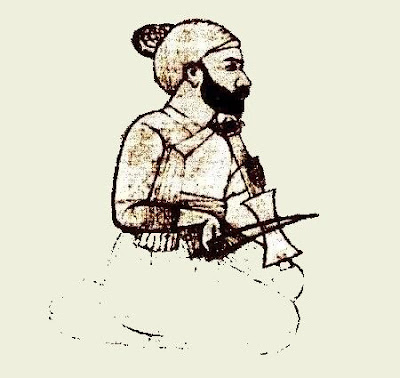We are posting the complete illustrated text of The Voice Of The Sarangi by Joep Bor, which is a detailed survey of the instrument—its various forms, historical background, development, and famous exponents.
This important work originally appeared in the Quarterly Journal—Volume XV XVI (Sept., Dec. ’86 & Mar. ’87)—of the National Centre for the Performing Arts, Bombay.
The book has been scanned from a copy sent to us by His Excellency Jyoti Swarup Pande, and is being reproduced here as a PDF file for educational purposes only.
Right-click the following link and ‘save target’.
The Voice of the Sarangi—Joep Bor (PDF~14MB)
The main question is whether the time is ripe for a resurrection of the sarangi, whether we are able to shake off the prejudices and misconceptions which surround the sarangi? The time may come but when? Since I have been involved with the sarangi, I have only seen its decline. What is more distressing is that there are very few students and young performers. Let’s not fool ourselves. As I concluded four years ago – unless a serious effort is made to firmly establish the teaching of sarangi and unless the music of the few surviving experts is immediately documented, there is little hope indeed. If the old and middle-aged artists, who still possess a considerable knowledge, die without leaving a trace of the art, the long chain of sarangi tradition will be broken. Nobody, not even a genius, will be able to fix things together again. Let’s not talk and start the work now.—Joep Bor

This is indeed a treasure. I have seldom come across a book on Indian music so thoroughly and meticulously researched. My heartfelt gratitude to the Sarangi.info team for making it so readily accessible to us.
Indeed! This is a fantastic piece of work. Thank you all for making it accessible to us. I read the whole thing in one sitting!
Thanks again!
Indeed Joep
thanks for putting the “Voice” online
Eric
The Voice of the Sarangi is one of the most important books written not just about this wonderful instrument and its players but also about Hindustani music history and culture as a whole. More people should read this fine work; I’m going to make it mandatory reading for my students, now that it is so easily accessible online. Many thanks Joep!
An extremely well researched book, thanks for putting it online.
Thanks for making this valuable book available in e-text. I hope the sarangi.info team would keep on doing such wonderful things.
being visually impaired, i cannot read pdf file. the book is password protected and i cannot change it in doc format even i have the software called pdf transformer. what should i do to read the book?
hello:
this pdf seems password protected. what is the password?
Thanks for making this document available. The whole website is very helpful and informative.
Does anyone know where to buy the best Sarangi? I am interested in buying one very soon. Your help will be much appreciated.
Dear Mr. Klacsanzky
Buying a Sarangi will definitely promote this instrument & the artisans involved in making this rare instrument alive from mere pieces of “Log & Leather” and of-course to the Indian Classical Music, wherever you will take this music and the instrument. I can suggest you to consult my friend Ustad Kamal Sabri (a Sarangi Exponent), Son of Ustad Sabri Khan, the Legend Sarangi Maestro in India.
Here is his Email ID…
& here is mine…
mr.rajeevonline@gmail.com,
rajeev.spicmacay@gmail.com
Hope he will meet your requirment. If needed you can get more details further… such as his contacts,/Cell Phone number etc..
RAJEEV
As it did not appear on the previous text, I’m giving in here again…
Email ID of Ustad Kamal sabri….
sabrikamal@hotmail.com
Please, I would like to contact Prof. Joep Bor. Is there an email or other address? I work for Parashuram Bhandari, sarangi player from Nepal who currently resides in Hawaii.
http://joepbor.com/contact.html
Reblogged this on Mojo's Page.